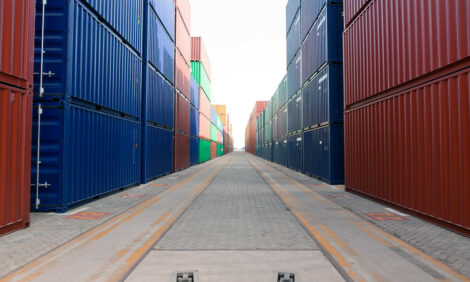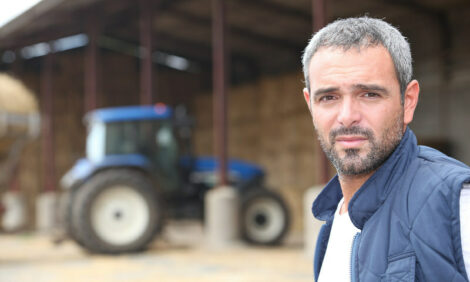



Kansas Farmer Says State Has Advantages for Swine Producers
MANHATTAN, Kan. – Nothing may be perfect, but Longford, Kan. farmer Roy Henry toldswine producers here Feb. 4 that business is pretty good in Kansas.
|
“The social climate for U.S. [swine] production is tough,“ said Henry, who raises pigs on his north central Kansas farm, “but overall we are better off in Kansas than most of the United States because we have accepted environmental responsibility quicker than some.“
That was one of the messages Henry brought to his fellow producers during the annual Swine Profitability Conference, sponsored by Kansas State University Research and Extension. Henry’s talk focused on swine production, “The Kansas Way,“ as he put it.
“That’s a very difficult topic to address,“ he admitted before his talk. “Probably, ‘The Kansas Way’ has more to do with an attitude that size doesn’t necessarily dictate who can compete in this industry.“
Henry, who has spent six years on the Board of Directors for the National Pork Producers Council, said Kansas farmers have “many advantages that those in other states don’t have.“
“We have a relatively cheap supply of grain, fairly good access to markets, fairly low population density and land that manure can be applied to,“ he said. “Those are big pluses in our business as we look to the future.“
The U.S. swine industry is a $24 billion industry, Henry noted. Even though large corporations and consolidation have led to a shrinking number of small farms, there’s still enough opportunity for families to make a living.
“The real question is, do I want to compete and if so, how do I do it?“ Henry said. “[In Kansas], we have all the natural components necessary to produce pork, so the issue is – in a changing industry – do we choose to make the changes necessary to stay in the industry or exit the business.“
Future changes may include adapting to new technologies and “probably certifying the product you raise,“ he said. Kansas farmers already have been leaders in these areas, and willing to accept those changes in the past, Henry said, noting that farmers in some other states have not.
The issue for Kansas farmers, Henry said, is whether producers are willing to raise what the consumer wants in a manner they accept.
“If we forget who our customer is,“ Henry said, “then we’re probably irrelevant.“
On other issues, he said:
- Consumer markets – “If we have a disadvantage regarding our market situation, that’s one thing. But I don’t think that will be the factor that makes you exit the business, although it is the one that will get the blame.“
- Contract production – “I think we’ll see a fair amount of contract production in the future, more than we do today. This has been more popular in other states. I don’t think that’s the key to staying competitive in our state because I believe profit margins will decrease as time goes on and more people choose this type of production. But it is an option for some.“
- Corporations moving operations outside the United States – “Once the pork industry leaves the United States, it’s going to be hard to get it back. There is a fair amount of interest overseas and some companies are already building there.“
- On the value of university research – “We get lots of information from K-State nutritionists and other leaders in the swine industry. They’re challenging us to do better, and adopt new technologies. K-State has been of tremendous value to the pork industry not only in Kansas, but other states as well.“
Source: Kansas State University - 4th February 2003













